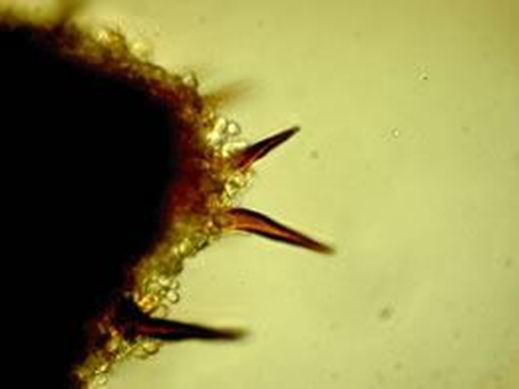| Macroscopic characters | shape | Sessile; effused-relaxed; sometimes entirely resupinate; ungulate to applanate; solitary to imbricate |
| size | Up to 9 x 13 x 8 cm |
| texture | Corky to woody |
| pileus | Reddish-brown to black; glabrous with age; rimose’; margin reddish-brown to yellow-brown |
| stipe | None |
| context | Reddish-brown; yellowish-brown; lustrous on cut surface; corky |
| pore surface | Yellowish-brown |
| pores | Circular to angular; daedaleoid; 2-3 per mm |
| tube layer(s) | Light colored within; indistinctly stratified; each layer up to 6mm thick |
| Microscopic characters | hyphal system | Monomitic; contextual hyphae brown, thin- or thick-walled and hyaline thin-walled hyphae |
| clamp connections | None |
| sterile elements | Setae abundant; subulate to ventricose; thick-walled; 40-50 x 10-14 µm |
| basidiospores | Ovoid; hyaline; becoming slightly yellowish in older hymenia; smooth; 4.5 -7 x 3.5-5 µm |
| Habitat characters | substrate/host | On living conifers; a few reports on hardwoods |
| seasonality | Perennial |
| type of decay | White pocket rot of the heartwood of living conifers; the decay and fruiting at branch at stubs is commonly in the middle and upper trunks but P. pini occasionally causes a butt rot and fruits neat the base of the tree |
| range | Widespread in coniferous forest regions of North America and circumglobal |
| Notes | |
| References | Gilbertson & Ryvarden, 1987; Grand & Vernia, 2004A |








